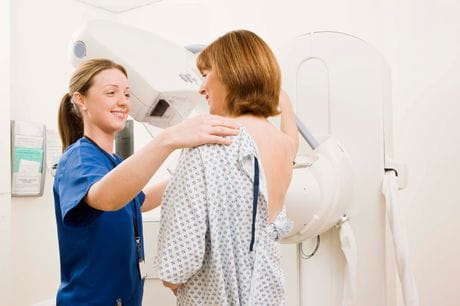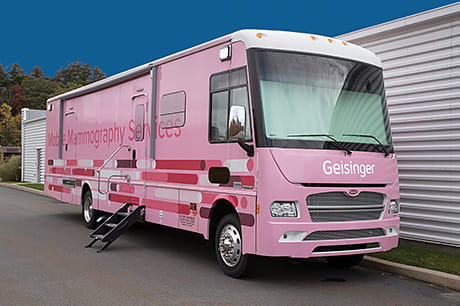What to expect during your first mammogram
Your first mammogram is an important appointment. But it doesn’t have to be a scary one.
As we age, a few things in life are certain: taxes, colonoscopies and, for women, mammograms.
If your very first mammogram is on your calendar, you may feel nervous or have concerns. But knowing what to expect can make the exam go more smoothly.
What to know before your first mammogram
While you might not be sure what to expect, taking charge of your health and scheduling your first (and regular follow-up) mammograms is an important part of your overall healthcare.
“It’s normal to be nervous and want to wait to get your first mammogram,” says Christine Policare, MD, a diagnostic radiologist. “But mammography plays an important role in breast health and finding any problems early, which is often when they are highly treatable.”
If you’re a woman without a family history of breast cancer in a parent or sibling (known as first-degree relatives) you should schedule your first mammogram at age 40. If you have a family history of breast cancer in a parent or sibling, you should talk to your doctor about when is best to schedule your first screening mammogram. Because it may be appropriate to schedule your first mammogram earlier than your 40th birthday.
When you go in for your mammogram, you’ll undress from the waist up. Then, your breast will be placed on an X-ray plate and compressed for a few seconds while images are taken. Following their first mammogram, most women say, “Hey, that wasn’t as bad as I thought it was going to be!”
During a 3D mammogram, the technician will take pictures in two projections — from above and from the side — to ensure visualization of all the breast tissue. Expect the entire process to take between 20 and 30 minutes.
What happens after your mammogram?
After the mammogram, your doctor receives a report, which they’ll review before sharing the findings with you. If your breast radiologist sees something out of the ordinary, you may need a second visit for additional pictures.
“We review your mammography results over time, comparing them to look for any changes from one mammogram to the next,” says Dr. Policare. “If your breast radiologist does happen to see something on your mammogram, it doesn’t automatically mean it’s something bad. It could be something harmless, like a cyst or overlapping breast tissue.”
Most women who are called back for additional breast imaging receive a good report and go right back into routine follow ups.
Tips to make your mammogram easier
Schedule around your period. During a mammogram, your breasts are compressed for a short time. If your breasts are tender during your period, you’ll want to plan a mammography around your menstrual cycle.
“Try scheduling your mammogram for the week immediately following your period if you haven’t started menopause,” says Dr. Policare. “Your breasts should be less tender during this time, which can help minimize any discomfort.”
Skip deodorant and lotion. To avoid having to repeat your mammogram, don’t wear deodorant or put lotion on your chest the day of your screening. Skincare items can appear as marks on the mammogram and won’t give your doctor a clear picture of your breasts. Consider scheduling an early-morning appointment and taking deodorant with you.
Wear comfortable clothes. When you arrive at the breast imaging center, you’ll receive a gown. Wearing loose-fitting clothes will keep you comfortable during the procedure.
Think about changes before your screening. It’s helpful for the technician to know about any recent changes you’ve noticed in your breasts, as well as any family history of breast cancer. You should also let the technician know if you’re breastfeeding or if you might be pregnant.
And the most important tip? “Whatever you do, don’t skip your annual mammogram,” says Dr. Policare. “It just might save your life!”
Next steps:
Learn about breast health care at Geisinger
What is a 3D mammogram?
Meet Christine Policare, MD





